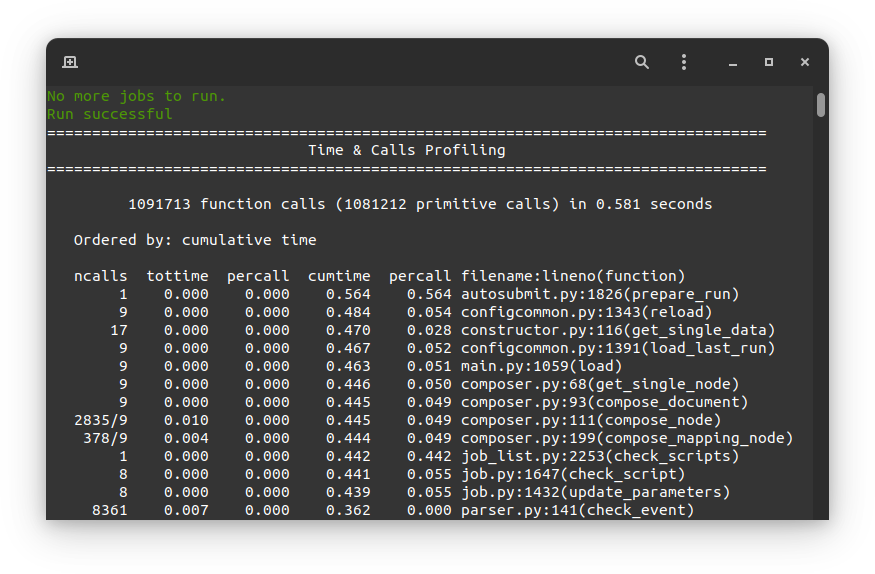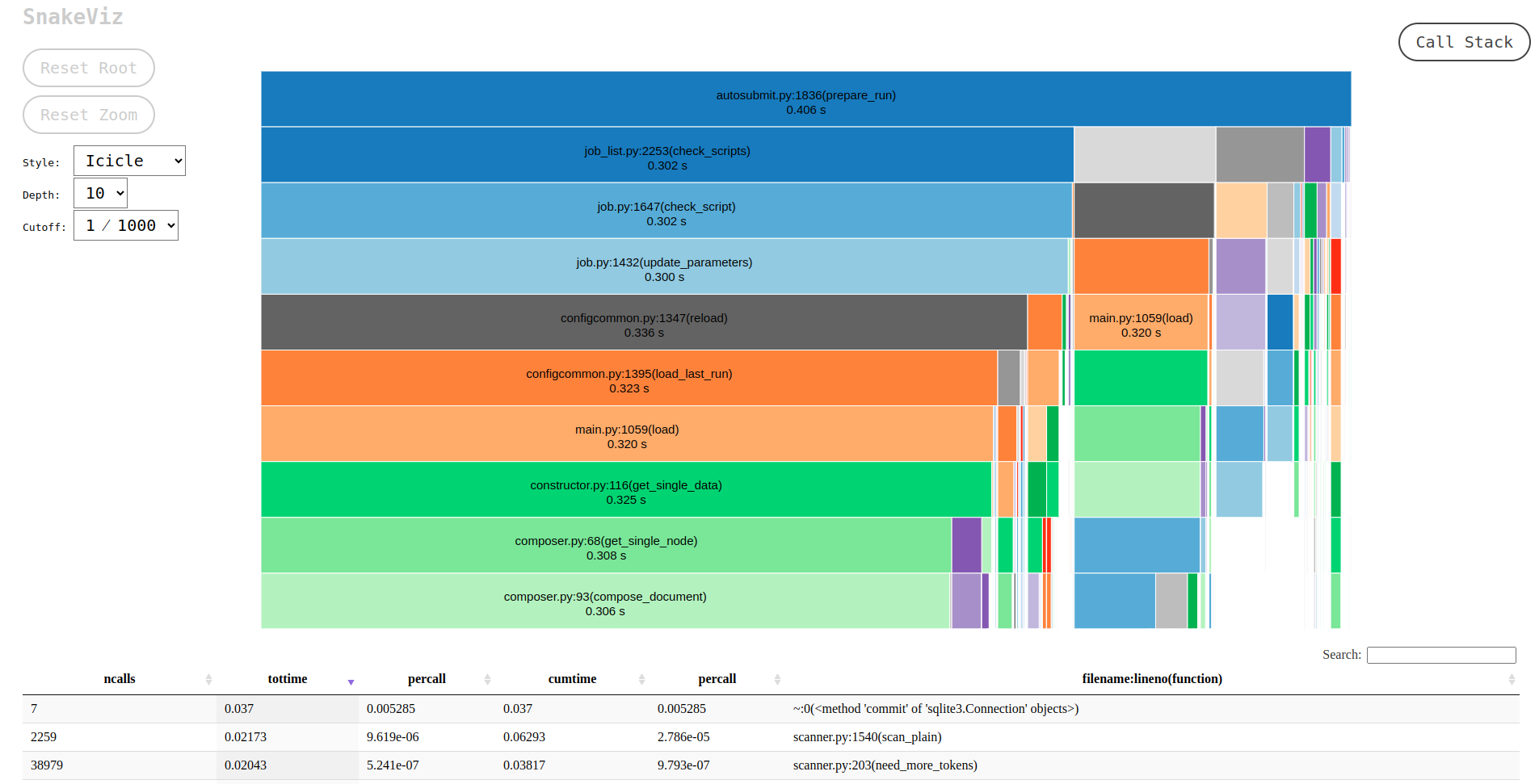Create an Experiment#
Create new experiment#
To create a new experiment, just run the command:
autosubmit expid -H HPCname -d Description
HPCname is the name of the main HPC platform for the experiment: it will be the default platform for the tasks. Description is a brief experiment description.
Options:
usage: autosubmit expid [-h] [-y COPY | -dm | -min [ -repo GIT_PATH -b BRANCH -config AS_CONF ] ] [-p PATH] -H HPC -d DESCRIPTION
-h, --help show this help message and exit
-y COPY, --copy COPY makes a copy of the specified experiment
-op, -operational creates a new experiment, starting with "o"
-dm, --dummy creates a new experiment with default values, usually for testing
-min, --minimal_config
creates a new experiment with minimal configuration files, usually for using a custom configuration
-repo GIT_PATH, --git_repo GIT_PATH
sets the git_repository
-b BRANCH, --git_branch BRANCH
sets the branch to use for the git repository
-config, --git_as_conf
sets the configuration folder to use for the experiment, relative to repo root
-local, --use_local_minimal obtains the minimal configuration for local files
-H HPC, --HPC HPC specifies the HPC to use for the experiment, default is localhost
-d DESCRIPTION, --description DESCRIPTION
sets a description for the experiment to store in the database.
Example:
autosubmit expid --HPC marenostrum4 --description "experiment is about..."
autosubmit expid -min -repo https://earth.bsc.es/gitlab/ces/auto-advanced_config_example -b main -conf as_conf -d "minimal config example"
autosubmit expid -dm -d "dummy test"
If there is an autosubmitrc or .autosubmitrc file in your home directory (cd ~), you can setup a default file from where the contents of platforms_expid.yml should be copied.
In this autosubmitrc or .autosubmitrc file, include the configuration setting custom_platforms:
Example:
conf:
custom_platforms: /home/Earth/user/custom.yml
Where the specified path should be complete, as something you would get when executing pwd, and also include the filename of your custom platforms content.
Copy another experiment#
This option makes a copy of an existing experiment. It registers a new unique identifier and copies all configuration files in the new experiment folder:
autosubmit expid -y COPY -H HPCname -d Description
autosubmit expid -y COPY -c PATH -H HPCname -d Description
HPCname is the name of the main HPC platform for the experiment: it will be the default platform for the tasks. COPY is the experiment identifier to copy from. Description is a brief experiment description. CONFIG is a folder that exists.
Example:
autosubmit expid -y cxxx -H ithaca -d "experiment is about..."
autosubmit expid -y cxxx -p "/esarchive/autosubmit/genericFiles/conf" -H marenostrum4 -d "experiment is about..."
Warning
You can only copy experiments created with Autosubmit 3.11 or above.
If there is an autosubmitrc or .autosubmitrc file in your home directory (cd ~), you can setup a default file from where the contents of platforms_expid.yml should be copied.
In this autosubmitrc or .autosubmitrc file, include the configuration setting custom_platforms:
Example:
conf:
custom_platforms: /home/Earth/user/custom.yml
Where the specified path should be complete, as something you would get when executing pwd, and also include the filename of your custom platforms content.
Create a dummy experiment#
It is useful to test if Autosubmit is properly configured with a inexpensive experiment. A Dummy experiment will check, test, and submit to the HPC platform, as any other experiment would.
The job submitted are only sleeps.
This command creates a new experiment with default values, useful for testing:
autosubmit expid -H HPCname -dm -d Description
HPCname is the name of the main HPC platform for the experiment: it will be the default platform for the tasks. Description is a brief experiment description.
Example:
autosubmit expid -H ithaca -dm "experiment is about..."
Create a test case experiment#
Test case experiments are special experiments which have a reserved first letter “t” at the expid. They are meant to help differentiate testing suits of the automodels from normal runs.
This method is to create a test case experiment. It creates a new experiment for a test case with a given number of chunks, start date, member and HPC.
To create a test case experiment, use the command:
autosubmit testcase
Options:
usage: autosubmit testcase [-h] [-y COPY] -d DESCRIPTION [-c CHUNKS]
[-m MEMBER] [-s STARDATE] [-H HPC] [-b BRANCH]
expid experiment identifier
-h, --help show this help message and exit
-c CHUNKS, --chunks CHUNKS
chunks to run
-m MEMBER, --member MEMBER
member to run
-s STARDATE, --stardate STARDATE
stardate to run
-H HPC, --HPC HPC HPC to run experiment on it
-b BRANCH, --branch BRANCH
branch from git to run (or revision from subversion)
Example:
autosubmit testcase -d "TEST CASE cca-intel auto-ecearth3 layer 0: T511L91-ORCA025L75-LIM3 (cold restart) (a092-a09n)" -H cca-intel -b 3.2.0b_develop -y a09n
Test the experiment#
This method is to conduct a test for a given experiment. It creates a new experiment for a given experiment with a given number of chunks with a random start date and a random member to be run on a random HPC.
To test the experiment, use the command:
autosubmit test CHUNKS EXPID
EXPID is the experiment identifier. CHUNKS is the number of chunks to run in the test.
Options:
usage: autosubmit test [-h] -c CHUNKS [-m MEMBER] [-s STARDATE] [-H HPC] [-b BRANCH] expid
expid experiment identifier
-h, --help show this help message and exit
-c CHUNKS, --chunks CHUNKS
chunks to run
-m MEMBER, --member MEMBER
member to run
-s STARDATE, --stardate STARDATE
stardate to run
-H HPC, --HPC HPC HPC to run experiment on it
-b BRANCH, --branch BRANCH
branch from git to run (or revision from subversion)
Example:
autosubmit test -c 1 -s 19801101 -m fc0 -H ithaca -b develop cxxx
How to profile Autosubmit while creating an experiment#
Autosubmit offers the possibility to profile the experiment creation process. To enable the profiler, just
add the --profile (or -p) flag to your autosubmit create command, as in the following example:
autosubmit create --profile EXPID
Note
Remember that the purpose of this profiler is to measure the performance of Autosubmit, not the jobs it runs.
This profiler uses Python’s cProfile and psutil modules to generate a report with simple CPU and
memory metrics which will be displayed in your console after the command finishes, as in the example below:

The profiler output is also saved in <EXPID>/tmp/profile. There you will find two files, the
report in plain text format and a .prof binary which contains the CPU metrics. We highly recommend
using SnakeViz to visualize this file, as follows:

For more detailed documentation about the profiler, please visit this page.